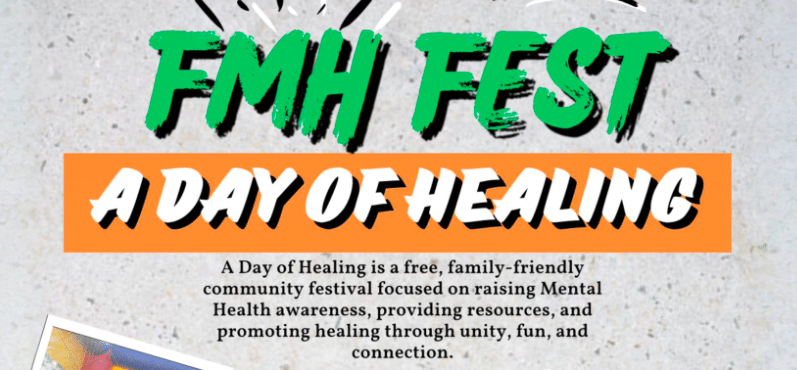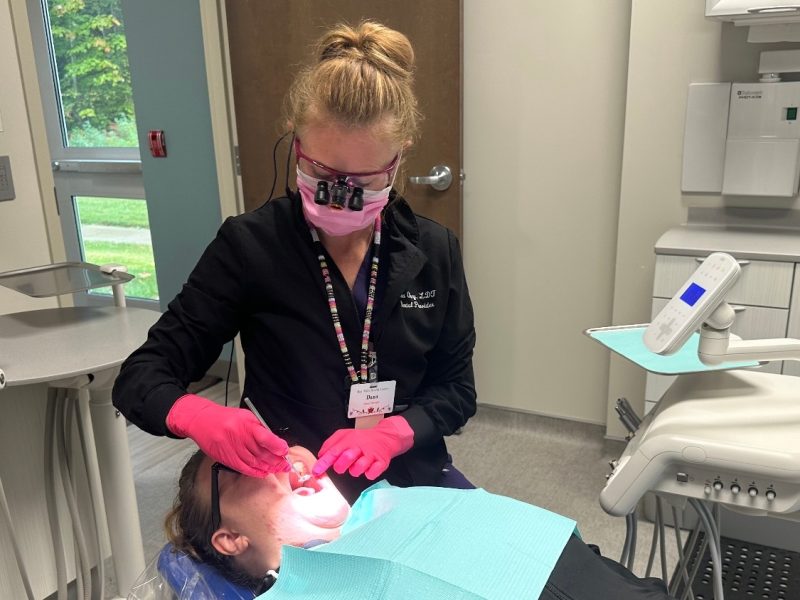Smaller does mean better for residents in adult foster care homes
OnPoint and Northern Lakes Community Mental Health share how adult foster care homes empower Michiganders with disabilities while enriching our communities.

It was through an adult foster care home, often referred to as a group home, that John Weerstra says he found a pathway to independence.
“I remember watching ‘A Beautiful Mind,’ the story about John Nash and how he learned to take control of his illness,” Weerstra says. “Because it was a smaller home, I got to know the staff. I would start asking them questions ‘What can I do to help myself?’ The staff was very friendly. They would bend over backwards to help you or find a resource to help you with what you wanted to do.”
In Michigan, the movement to deinstitutionalize individuals with mental illness or disabilities started in 1974 with the mental health code. It was made stronger by the 1999 U.S, Supreme Court decision in the Olmstead case that ruled the American with Disabilities Act prohibits unnecessary segregation of people with disabilities.
“State hospitals have gone the way of the Pony Express for the most part —
except for the most extreme needs — because they isolated individuals in the community,” says Mark Witte, executive director for OnPoint, Allegan County’s community mental health agency (CMH). OnPoint works with about 65 adult foster care homes mostly in Allegan County
The Michigan’s Centers for Medicaid and Medicare Services has made a push for smaller homes through its Home Community-Based Services, requiring that adult foster care homes be 12 beds or less.
“It’s really about making it person centered, what the person needs specifically for them and allowing them the most choice. That’s very difficult to do in the larger settings,” says Tracy Andrews, director of managed and integrated care for Northern Lakes Community Mental Health.
Northern Lakes CMH works with close to 90 adult foster care homes that are mostly located within its six-county coverage area: Crawford, Grand Traverse, Leelanau, Missaukee, Roscommon, and Wexford.
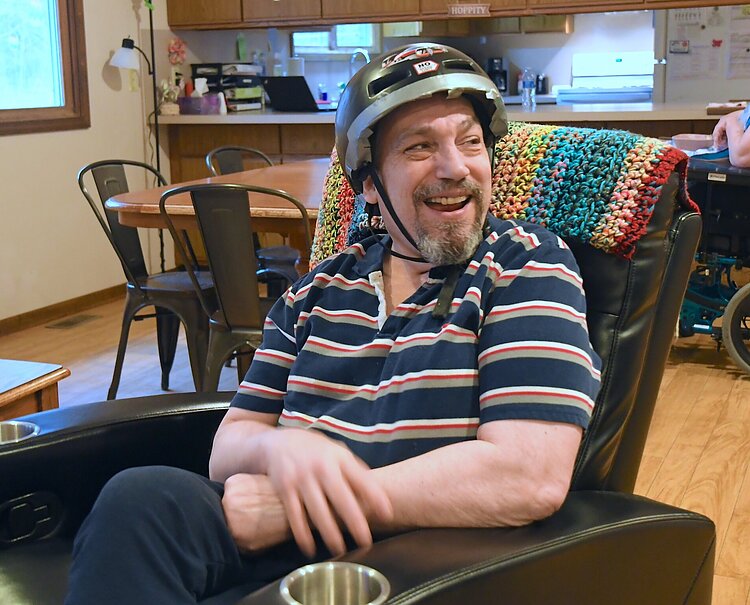
Running happy homes
The goal of Dave Simpson, a residential services administrator for Northern Lakes CMH, is to run “happy homes.”
“In happy homes, residents feel safe and they feel valued,” Simpson says. “They feel good about being there. Their family members and guardians feel comfortable that the needs are being met for their loved one or for their ward.”
Simpson oversees six specialized residential homes, one of which is the Woodland home. Like many adult foster care homes, Woodland, a six-bed facility, was built in the 1990s and is a one-story home with no stairs, wide hallways and doorways, and universally accessible bathrooms. Other than the larger dumpster outside, the Woodland home looks like any other home in the area.
“Staff like coming to work because they’re part of something and they’re improving the lives of the people who they serve,” Simpson says. “Operationally, happy homes tend to be compliant and compliant homes tend to be cost effective homes.”
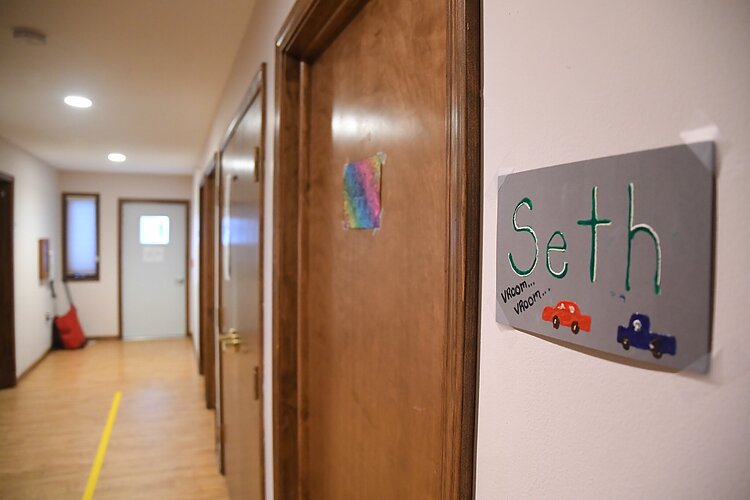
In 2015, Simpson transitioned the house to serve individuals who live with autism spectrum disorder, noting that, due to the nature of their condition, these individuals required their own bedroom or space designated as a safe place to decompress.
“I’m a fan of a smaller home-like atmosphere,” Simpson said. “A setting where you can maintain an environment that is calm, nurturing, and home-like gives people the ability to feel like they’re in their own space. That’s the goal.”
A former supervisor helped the residents decorate the home, finding colors that worked for the residents and putting up posters. The home is decorated for all the holidays with Simpson noting that at Christmastime, thousands of lights adorn the house.
“Licensing comes in and they just get the biggest kick out of our home because it’s well kept,” Simpson says. “It looks nice, smells good, the guys are happy, and they’ve got options for what they can do.”
A key to that success is the staff, Simpson says. Andrews notes that when talking about how residents and communities benefit from an adult foster care home, the credit has to be given to the providers who are doing the work.
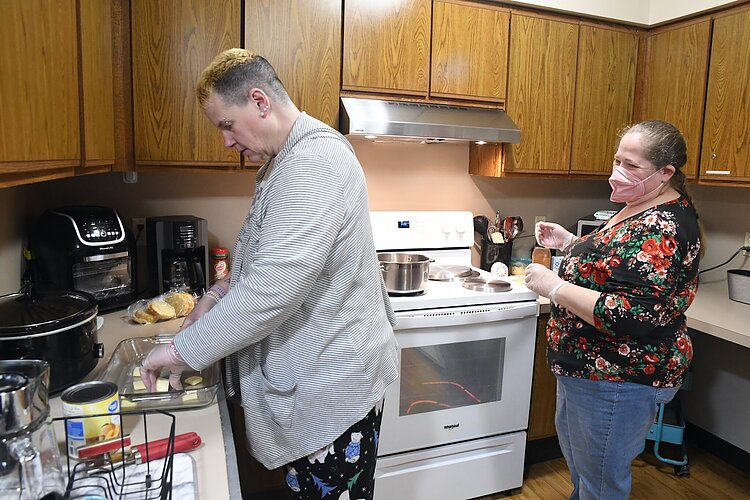
Building a place to succeed
Witte says that smaller homes provide for greater opportunity for individualized care that is much more customizable. Amy Kettring, provider network manager for OnPoint, adds that the services are person-centered with each person in the home having goals and objectives. The resident usually helps to set those goals.
“When you’re in a larger facility, and there’s less staff on site, the staff is unable to provide the level of treatment to really make a difference on those goals and objectives that the individual thinks is important in their life,” Kettring says. “Having a smaller setting allows the individual to really grow and kind of drive that treatment.”
There are two types of adult foster care homes. In a general adult foster care home, staff offers support or guidance to the individual, from medication management to reminding them to brush their teeth. Individuals with higher needs may be placed in a specialized adult foster care home where staff may do more hands-on support in activities of daily living such as bathing.
“I’ve seen so many success stories of people who were just not living a good life,” Andrews says. “They got into the right setting with the right level of care and they’re having the best life that they could have.”

Benefit to the community
Because of the push for more inclusion, Andrews says communities recognize the value of having those with disabilities interacting and being a part of the community.
Day-to-day activities will vary, Kettring notes. Some residents may be in school — those with disabilities may attend school until age 26 — and others might work. If a goal is to learn about budgeting and finances, a resident might help with grocery shopping or learn about healthy foods and plan a meal. It depends on the individual care plan and the day’s activities.
Andrews says that when adult foster care home residents are embedded in the community, it not only improves that person’s life, but also helps to remove the stigma attached to people living with an intellectual developmental disorder or a mental health illness.
“I think it helps us as a community be more receptive and be more inclusive to people who are receiving mental health services or living in those types of settings,” Kettring concludes. “It’s a win-win for the community. The community is benefiting in terms of what those people have to add and we’re also learning how to be more inclusive of all people.”
Joanne Bailey-Boorsma has 30-plus years of writing experience having served as a reporter and editor for several West Michigan publications, covering a variety of topics from local news to arts and entertainment.
Photos by John Grap.
The MI Mental Health series highlights the opportunities that Michigan’s children, teens and adults of all ages have to find the mental health help they need, when and where they need it. It is made possible with funding from the Community Mental Health Association of Michigan, Center for Health and Research Transformation, Genesee Health System, Mental Health Foundation of West Michigan, North Country CMH, Northern Lakes CMH Authority, OnPoint, Sanilac County CMH, St. Clair County CMH, Summit Pointe, and Washtenaw County CMH.


